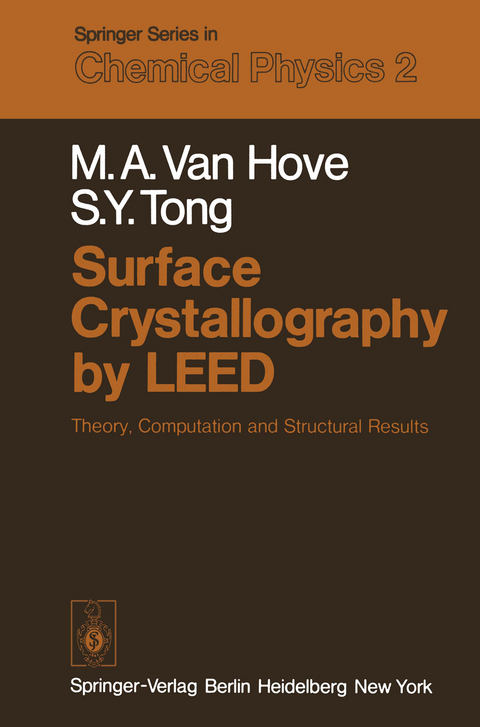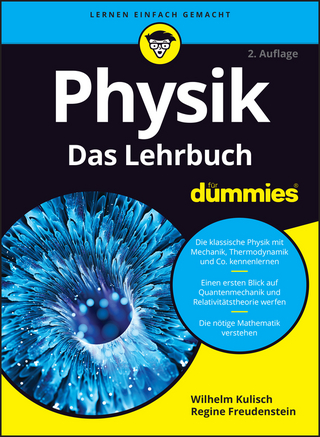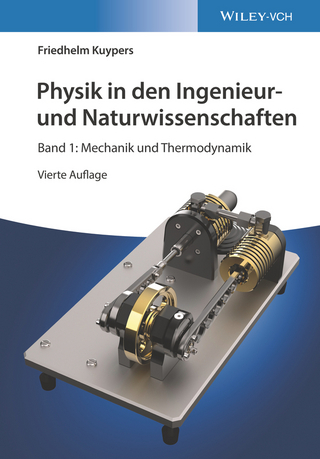
Surface Crystallography by LEED
Springer Berlin (Verlag)
978-3-642-67197-5 (ISBN)
Dr. Michel A. Van Hove is a Staff Scientist in the Materials Sciences Division and the Advanced Light Source of the Lawrence Berkeley National Laboratory in Berkeley, California, USA, and an Adjunct Professor in the Physics Department of the University of California in Davis, California, USA. His research interests focus on the structural, chemical, electronic and magnetic properties of surfaces, interfaces, and related nano-structures. The emphasis is on modelling experimental techniques toextract such information from actual materials.
1. Introduction.- 1.1 LEED as a Tool for Surface Studies.- 1.2 Purpose of the Computational Programs.- 1.3 Physical Processes Included in the Programs.- 1.4 Capabilities of the Programs.- 1.5 Size, Speed and Limitations of the Programs.- 1.6 Relation to Other LEED Programs.- 1.7 Some Computational Considerations.- 2. The Physics of LEED.- 2.1 A Simple Description of the LEED Process: Clean Crystals and Bragg Reflections in One Dimension.- 2.2 Peak Width and Electron Penetration Depth.- 2.3 Three-Dimensional Effects.- 2.4 Overlayer Effects.- 2.5 Elements of a LEED Theory.- 3. Basic Aspects of the Programs.- 3.1 Units and Geometrical Conventions.- 3.2 Layers, Subplanes and Plane Waves.- 3.3 Superlattices.- 3.4 Atomic Scattering and the Calculation of Phase Shifts.- 3.5 Thermal Vibrations.- 3.6 Ordering of (?,m) Pairs.- 4. Symmetry and Its Use.- 4.1 Symmetry and Registries.- 4.2 Symmetry Among Beams.- 4.3 Some Formulas.- 4.4 Summary.- 5. Calculation of Diffraction Matrices for Single Bravais-Lattice Layers.- 5.1 Layer Diffraction Matrices.- 5.2 Subroutine MSMF.- 5.3 The Intralayer Multiple-Scattering Matrix X.- 5.4 Scattering Amplitudes and Temperature Effects.- 6. The Combined Space Method for Composite Layers: by Matrix Inversion.- 6.1 The Formalism.- 6.2 Subroutine MTINV.- 7. The Combined Space Method for Composite Layers: by Reverse Scattering Perturbation.- 7.1 The Formalism of Reverse Scattering Perturbation (RSP) Theory.- 7.2 Combining RSP and Matrix Inversion.- 7.3 Subroutine MPERTI.- 8. Stacking Layers by Layer Doubling.- 8.1 The Formalism.- 8.2 Bulk Treatment: Subroutine SUBREF.- 8.3 Surface Treatment: Subroutines ADREF1, DBLG, DBG.- 9. Stacking Layers by Renormalized Forward Scattering (RFS) Perturbation.- 9.1 The Formalism.- 9.2 Subroutines RFS03, RFS02 andOthers.- 10. Assembling a Program: the Main Program and the Input.- 10.1 Preparing a Calculation.- 10.2 The Main Program.- 10.3 Explanation of Output.- 10.4 Main Program for Clean fcc (111) and hcp (0001) Faces, Including Possible Top-Layer Registry Shifts, Using RFS.- 10.5 Main Program for a Small-Atom p(2×1) Overlayer on a fcc (111) Substrate, Using RSP and RFS.- 10.6 Main Program for a Clean fcc or bcc (100) Surface, Using RFS.- 10.7 Main Program for a p(2×2) Overlayer on an fcc or bcc (100) Substrate, Using Layer Doubling.- 10.8 Main Program for a c(2×2) Overlayer on an fcc or bcc (100) Substrate, with Rumpling of the Topmost Substrate Layer, Using Matrix Inversion and RFS.- 10.9 Main Program for an Upright Diatomic Molecule on an fcc or bcc (100) Substrate, Using Layer Doubling.- 11. Subroutine Listings.- 12. Structural Results of LEED Crystallography.- 12.1 Non-Metals.- 12.2 Clean Metals.- 12.3 Adsorption on Metals.- 12.4 Bibliography.- Appendix A. Symmetry Among Plane Waves.- Appendix B. Lattice Sums Over Sublattices.- Appendix C. A Line-Printer Plotting Program.- References.
| Erscheint lt. Verlag | 18.10.2011 |
|---|---|
| Reihe/Serie | Springer Series in Chemical Physics |
| Zusatzinfo | X, 288 p. |
| Verlagsort | Berlin |
| Sprache | englisch |
| Maße | 155 x 235 mm |
| Gewicht | 463 g |
| Themenwelt | Naturwissenschaften ► Physik / Astronomie ► Allgemeines / Lexika |
| Naturwissenschaften ► Physik / Astronomie ► Atom- / Kern- / Molekularphysik | |
| Naturwissenschaften ► Physik / Astronomie ► Festkörperphysik | |
| Technik ► Maschinenbau | |
| Schlagworte | crystallography • Kristallographie • Niederenergie-Elektronenbeugung • Oberfläche • Surfaces |
| ISBN-10 | 3-642-67197-7 / 3642671977 |
| ISBN-13 | 978-3-642-67197-5 / 9783642671975 |
| Zustand | Neuware |
| Informationen gemäß Produktsicherheitsverordnung (GPSR) | |
| Haben Sie eine Frage zum Produkt? |
aus dem Bereich


